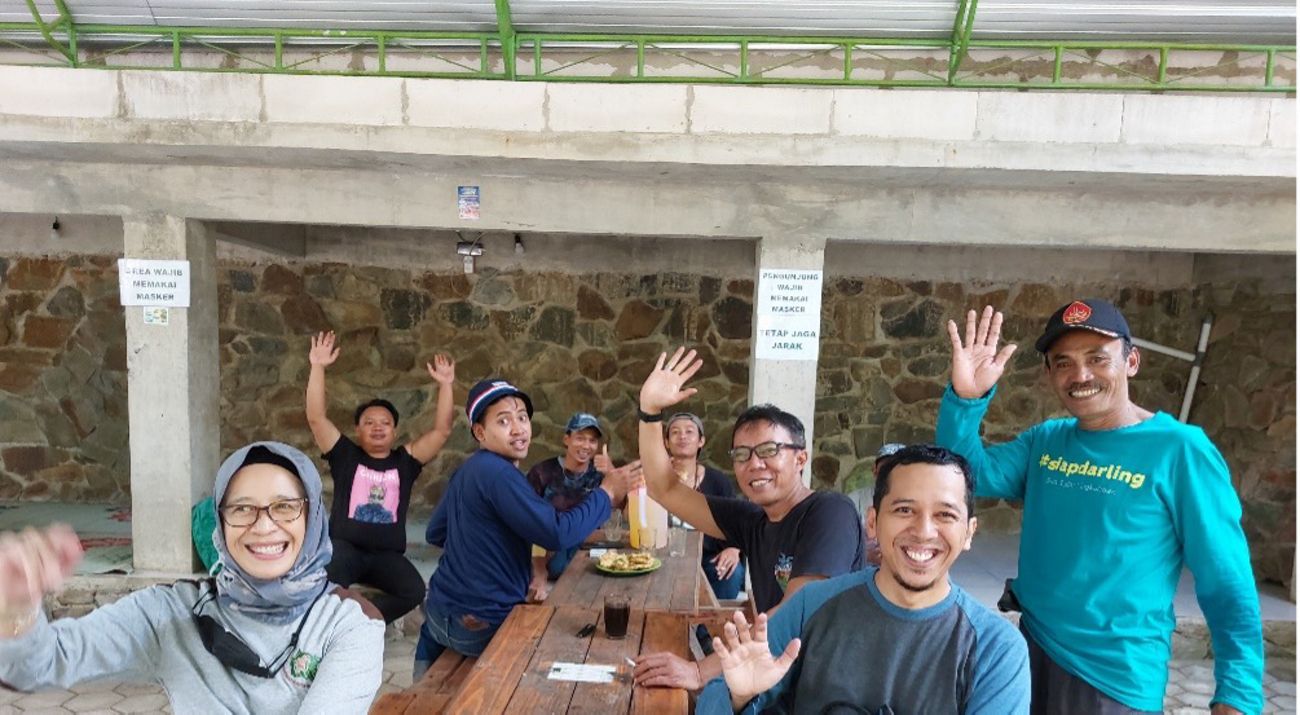The Mango Tree's Long Journey in Kudus
By Herlina Hartanto, Ph.D., YKAN Executive Director
A trip in early August 2022 took me to Kudus Regency, Central Java Province. To be precise, I went to one of YKAN's work sites, where YKAN accompanied five villages in the Muria Mountains and Patiayam Mountains to carry out land rehabilitation in 2018. This trip felt special because it was my first trip to Kudus Regency and the first time I met face-to-face with the resident's key partner.
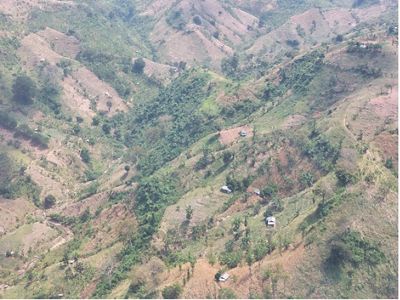
The journey to the location is colored with views of the ridges around the Muria Mountains and Patiayam, which are open, without tree canopy. Recovery efforts are needed. For residents, this hilly area plays an essential role as a source of water. Not only that, this hillside is a habitat for various flora and fauna, including the leopard (Panthera pardus melas), which is the last big cat on the island of Java and, based on IUCN data, is now in the critically endangered group—or one step towards extinction.
The importance of this area was felt when a major flood hit Kudus and the surrounding area in 2014. Road access was closed, and the foundations of the economy were paralyzed. The economic activities of the community, government, and the industrial sector were suspended for about an entire week.
Take the steps
Various parties have attempted to replant the bare hills, not only from the government and residents but also from the corporate side. One company that has shown its commitment is PT Djarum, which started tree planting efforts in the Uria Mountains and Patiayam Mountains in 2006. This commitment is still being offered today.
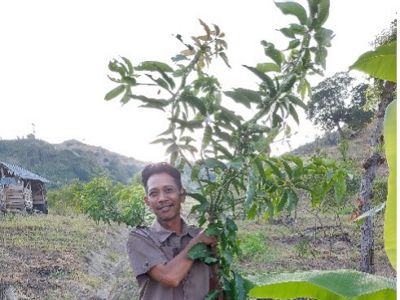
Since 2018, PT Djarum has partnered with YKAN to support land rehabilitation by actively involving villagers as the main actors to become change agents. Through the Inspirational Citizen Action for Change (SIGAP) approach, residents from five villages in the Muria and Patiayam Mountains mobilized to carry out rehabilitation activities for land that had been denuded or damaged as the most critical. The target is that by 2023, the rehabilitated land will reach 700 hectares.
Through the SIGAP approach, the farmers involved are no longer treated as recipients and growers of seedlings whose performance is closely monitored but as self-determiners. They are the ones who determine the type of seeds to be planted, the location for planting, the spacing, and other needs, which are carried out through an inclusive discussion and decision-making process.
The result, among other things, is that there are variations in choices among villages that reflect socio-economic conditions, culture, technical knowledge, and community needs. Farmers in Gondoharum Village, Jekulo District, Kudus, chose five types of trees: mango, pamelo, avocado, jengkol and petai. Meanwhile, farmers in Menawan Village, Gebog District, chose five other tree species.
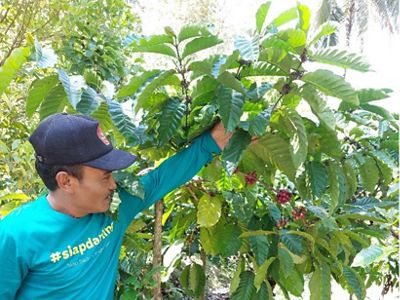
Pak Mashuri, the head of the Wonorejo Farmers Group, Hamlet Kaliwuluh, in Gondoharum Village, whom we met at the beginning of the trip, told us how long he and the YKAN team had gone through in convincing farmers in his village to plant trees on their barren lands. "I have to get at least 20 local champions in my village to mobilize the people," he said.
Finally, 208 farmers were collected to rehabilitate critical land in their respective plantations with a total area of 122.5 hectares. They held at least three group discussions to get the commitment of the farmers whose lands would be planted, to determine the types of trees to be planted in their respective gardens, and the stages of rehabilitation to be carried out, including monitoring, maintenance, and division of responsibilities.
Based on the discussion results, at least six criteria were used to determine the type of plant. Namely the suitability of tree seedlings with the land, compatibility with the ambient weather, level of ease of maintenance; resistance against pests and diseases; the comfort of sale; and seed productivity. These six criteria serve as a reference before choosing mangoes, pamelo oranges, avocados, jengkol and petai.
Harvesting results
The long process has paid off. Smoothly, Mr. Mashuri shared the knowledge and dreams that settled in his mind.
Once these fruit trees grow tall and their canopies touch each other, he understands, farmers will no longer be able to rely on their economic sources from food/seasonal crops, namely corn, gembili, and black potatoes, which are their mainstay at this time. These food crops will shift into a secondary economic source. The medium-term financial basis is a livestock (goats) while waiting for the trees planted to bear fruit. Mr. Mashuri has also considered the efforts that must be made to process mangoes if the production is abundant.
The assistance of YKAN colleagues also allows village officials and residents to identify and work together to overcome their various challenges. From the attack of rats and monkeys in the garden, the accumulation of garbage left by tourists, the drying up of springs for agriculture, to the development of ecotourism.
Without a holistic effort to address the challenges faced by the village, land rehabilitation efforts will not be sustainable. This is summarized in Pak Mashuri's statement that afternoon, "We don't need green, thok. We need the economy in the short, medium and long term," he said.
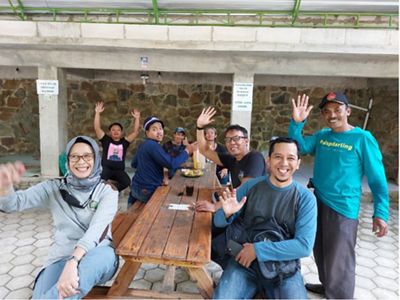
Only with this holistic effort can Mr. Mashuri pursue his dream to make Hamlet Kaliwuluh, Gondoharum Village, the largest producer of mangoes in Central Java Province and the largest producer of goats in Kudus Regency.
His knowledge and inspiration have been shared with farmers from Terban Village who visited Gondoharum recently. I am sure He will inspire more farmers and other villages so that the function of the forest as a "village fence" can be internalized and encouraged in many places in the Muria Mountains and its surroundings.
The success and sustainability of land rehabilitation through the SIGAP approach that places farmers as agents of change and determinants is expected to be adopted and implemented by PT Djarum and other stakeholders in many villages so that their investment is realized in the form of green landscapes of the Muria Mountains and Patiayam.


